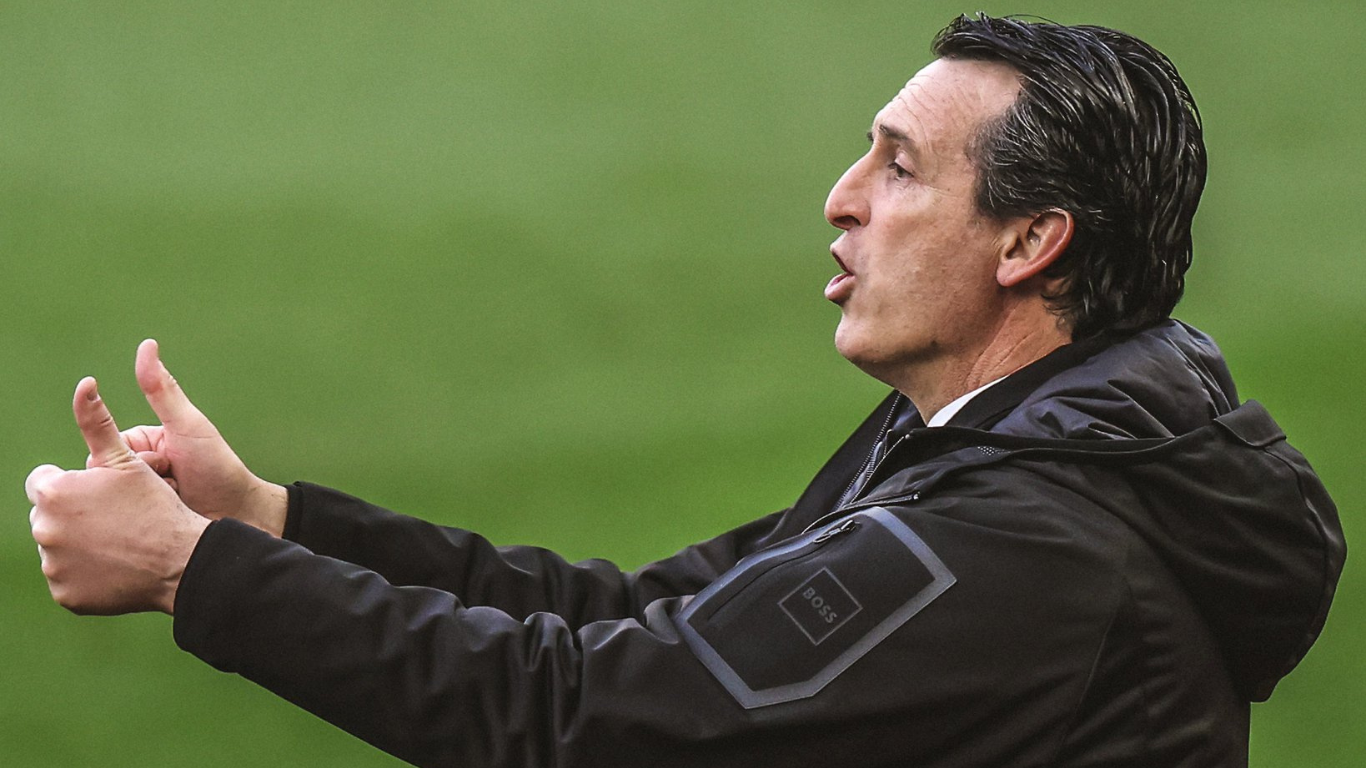
APFA
April 22, 2025
Looking Back on a Big Week for Unai Emery
Aston Villa endured a busy, gruelling week over the past seven days, attempting to overcome a 3-1 deficit in the Champions League against PSG before facing fellow European-chasing Newcastle United in the Premier League at the weekend. Unai Emery’s side had mixed results, but their principles remained the same.
Emery has done a sensational job since his arrival at Villa Park, instilling a clear philosophy that has yielded impressive results, with the Villans returning to Champions League action under his stewardship. Although not guaranteed, Villa are on track to qualify for Europe’s elite club competition once again, despite going on a strong run in the Champions League alongside their domestic battles.
After suffering a disappointing 3-1 defeat away to PSG in the first leg of their quarter-final tie, Villa were left with it all to do at home. Despite the tricky task, Emery’s side stuck to their high-risk, high-reward philosophy, which produced both ends of the spectrum on the night.
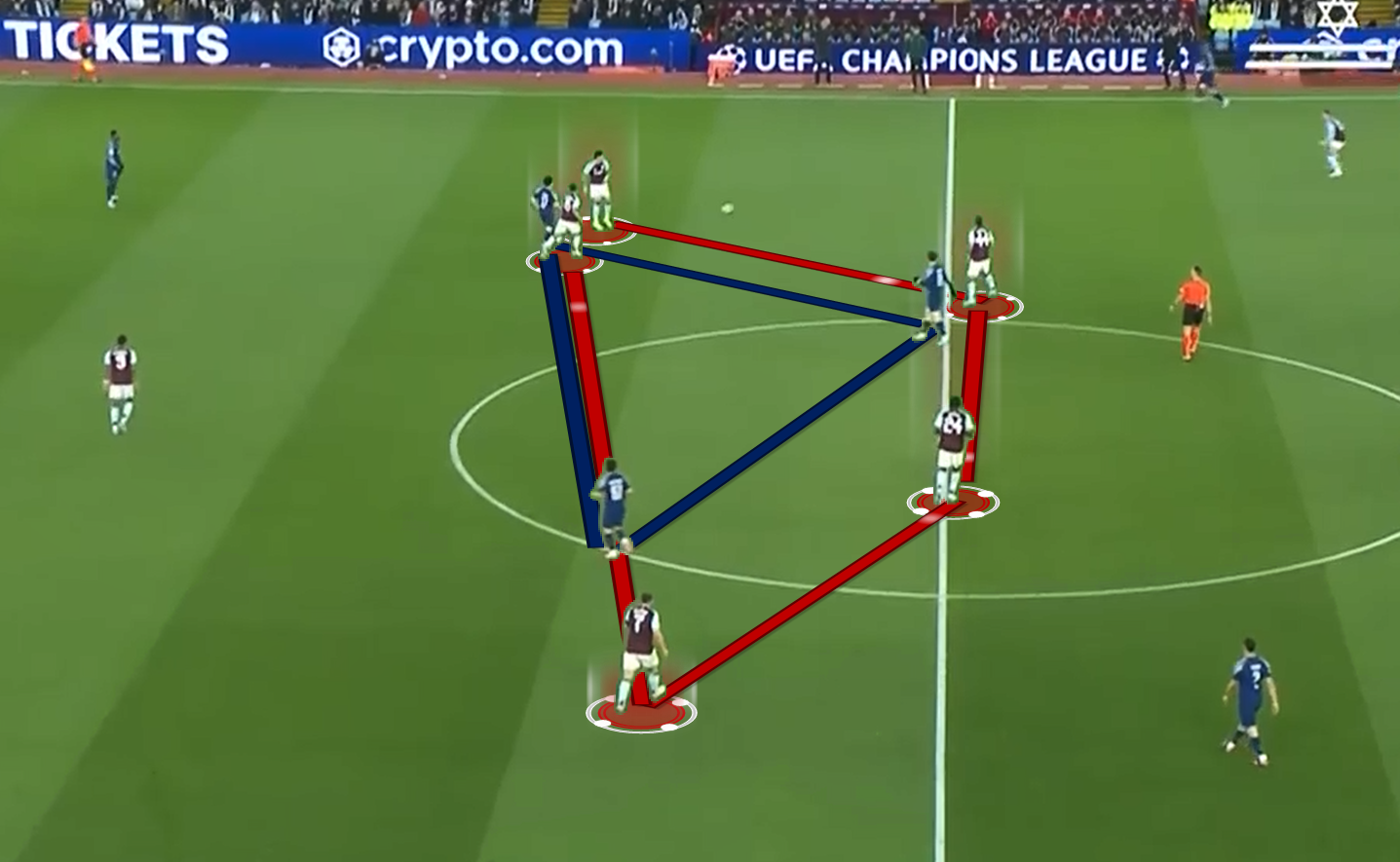
Out of possession, Villa setup in a 4-2-3-1 system, allowing them to try and control PSG’s midfield three. John McGinn and Morgan Rogers would tuck in centrally to keep the midfield compact, with Amadou Onana and Boubacar Kamara pushing on to try and limit two of PSG’s midfield three. Youri Tielemans would stay tight with PSG’s pivot player, Joao Neves, attempting to stop him from getting on the ball and dictating tempo.
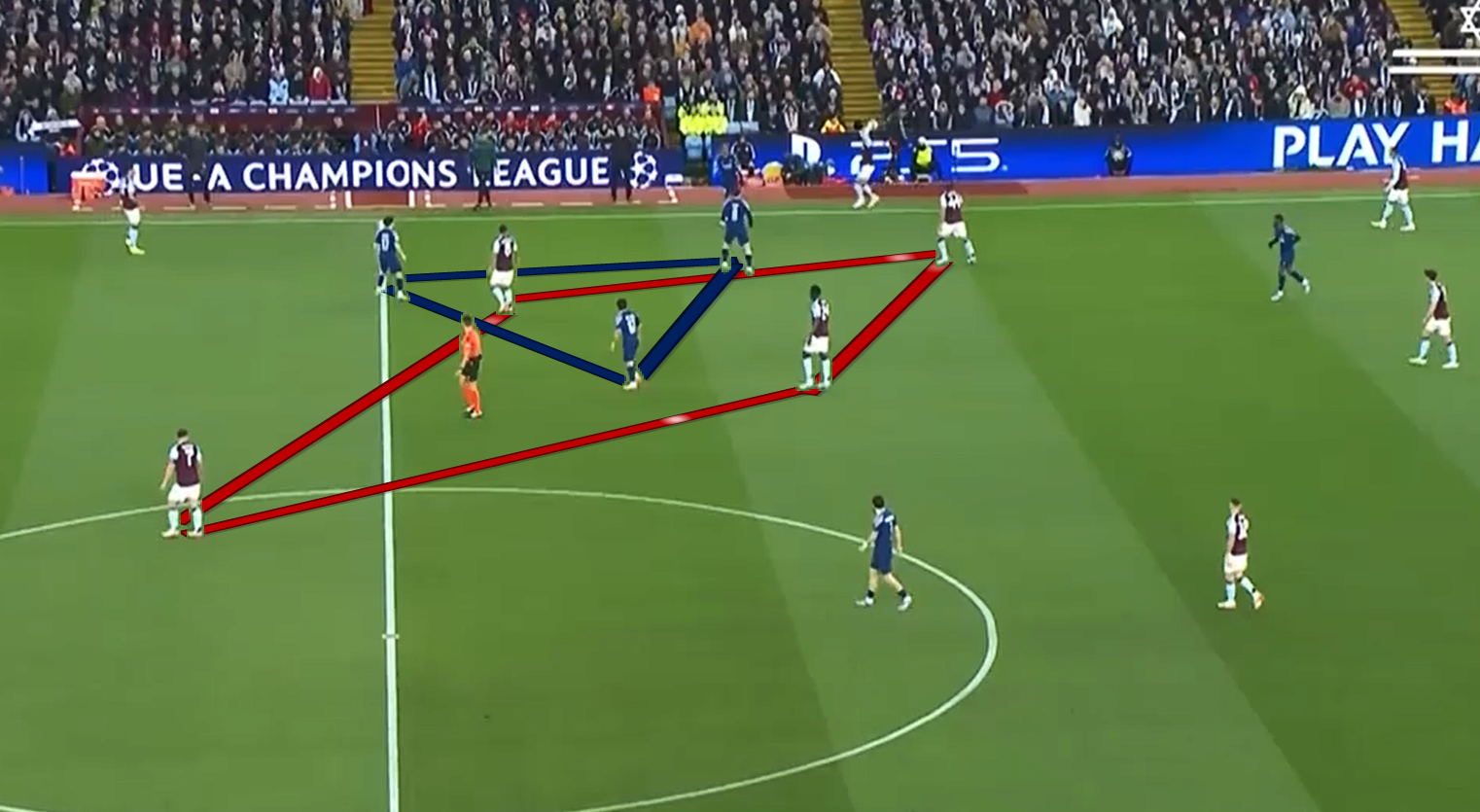
On the ball, Villa played a box midfield (4-2-2-2), allowing them to outnumber PSG in the middle of the park. McGinn or Tielemans would look to become the free man in between the lines, which happened regularly due to Joao Neves being unable to cover both men. McGinn getting on the ball in these areas meant he vacated the wide areas, but this is where Villa’s full-backs come into play, which we will touch on later in the article.
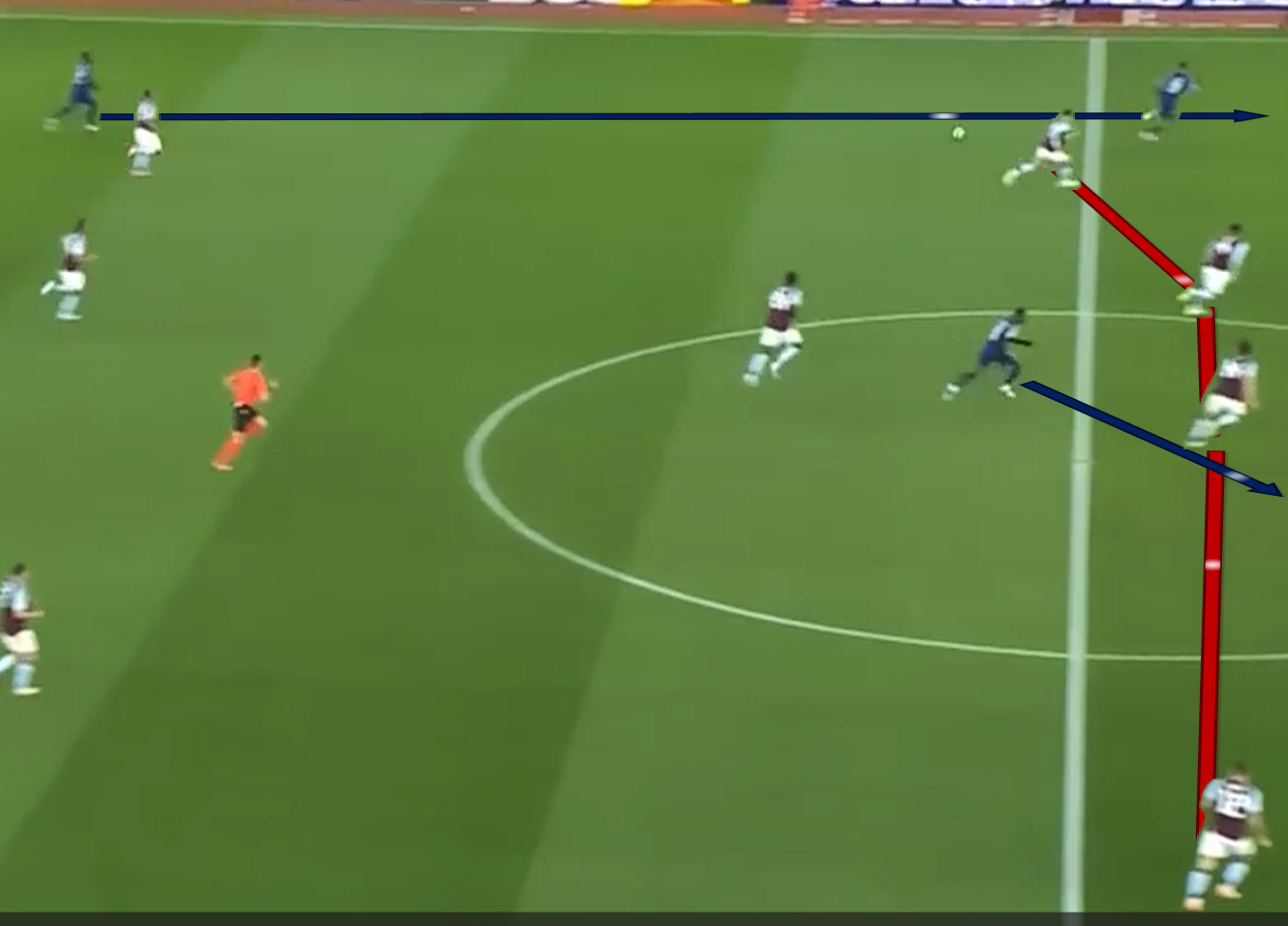
The issues for Villa came in transition. With the Premier League side chasing a goal, they’d often commit bodies forward, with Kamara and/or Onana looking to get in the final third. This suited PSG to a T, allowing them to transition quickly, looking to play the ball in behind. With Onana and/or Kamara pushing high, this forced Villa’s defence to creep forward, leaving plenty of space in behind for the likes of Ousmane Dembele to exploit.
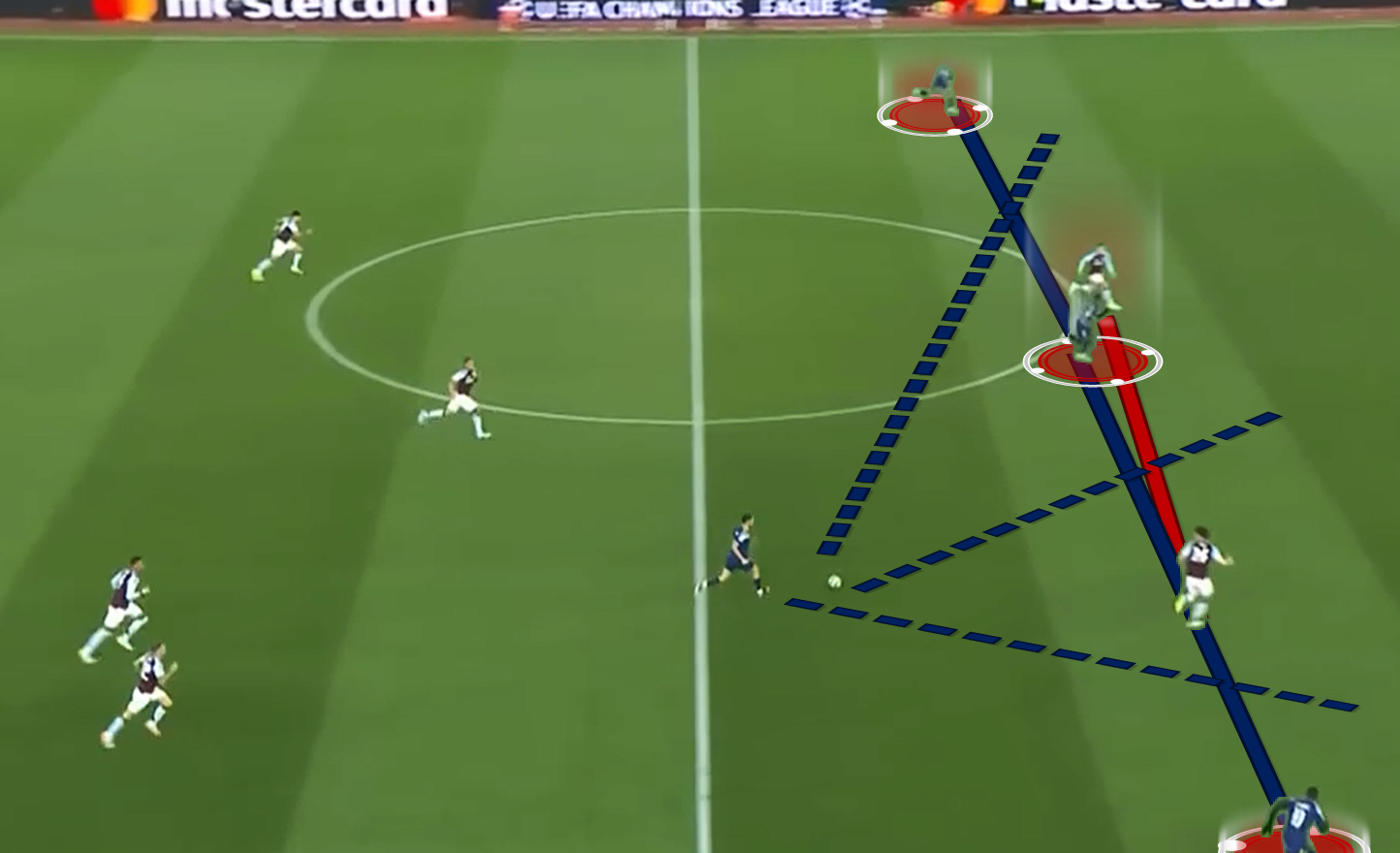
This caused both PSG goals early on in the second leg, leaving Villa with a mountain to climb. As you’ll see, PSG transitioned to either exploit the high line, or create overloads in attack. Again, high-risk, high-reward, but unfortunately, we only saw the risks early on.
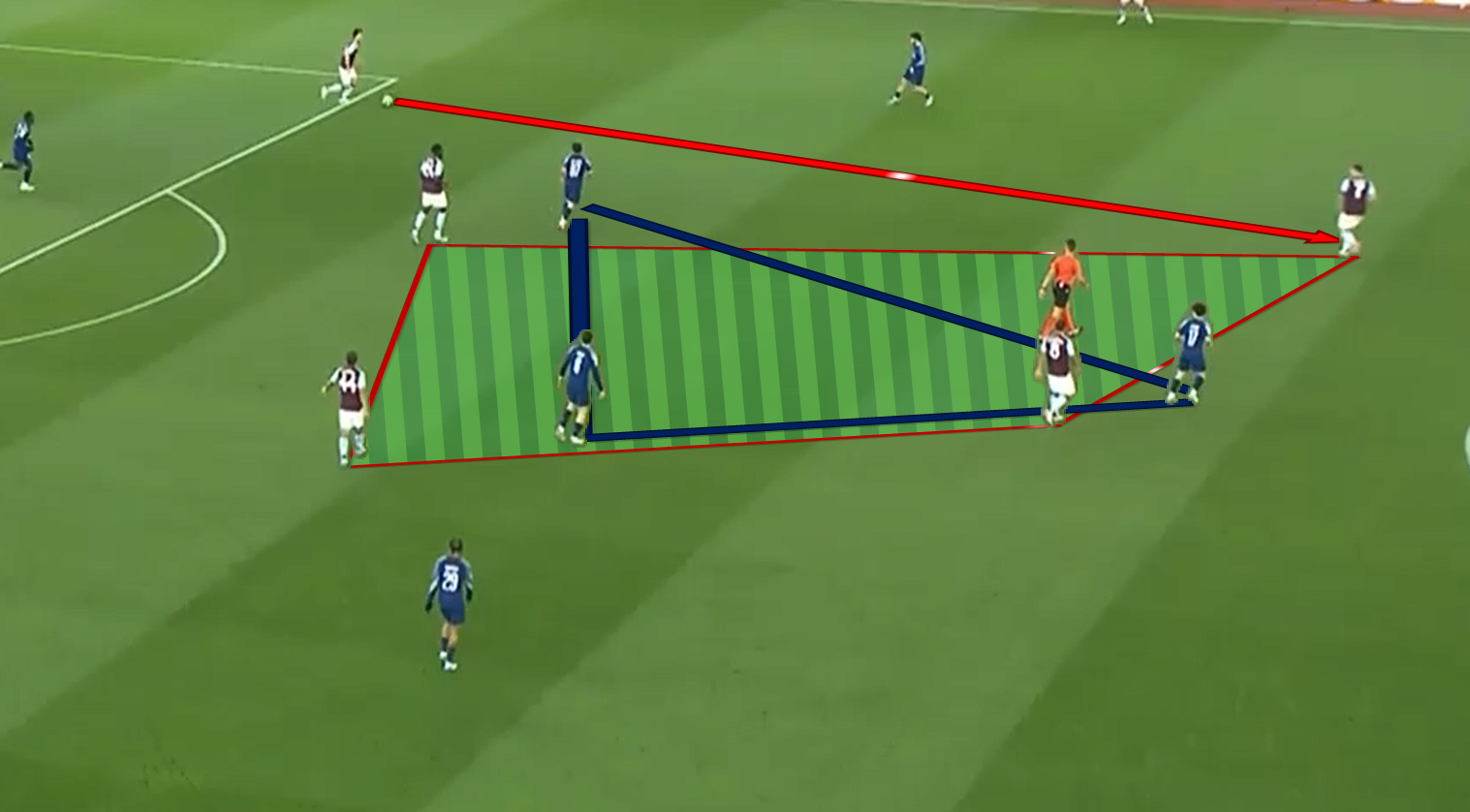
The box midfield did help Villa in the build-up in the second half as they chased the game. With Kamara and Onana occupied due to PSG’s high press, Torres was able to carry the ball out of defence regularly and find Tielemans or McGinn. On this occasion above, McGinn, with Neves distracted by Tielemans. This led to Villa’s second goal of the night, with McGinn turning on the ball and running into space in between the lines.
Unfortunately for Villa, they were unable to complete a comeback despite a spirited performance, but their key principles were on display.
The same principles applied when they faced Newcastle, and interestingly, PSG and Newcastle set up in a similar way. Thankfully for Emery, they enjoyed more success against their Premier League rivals.
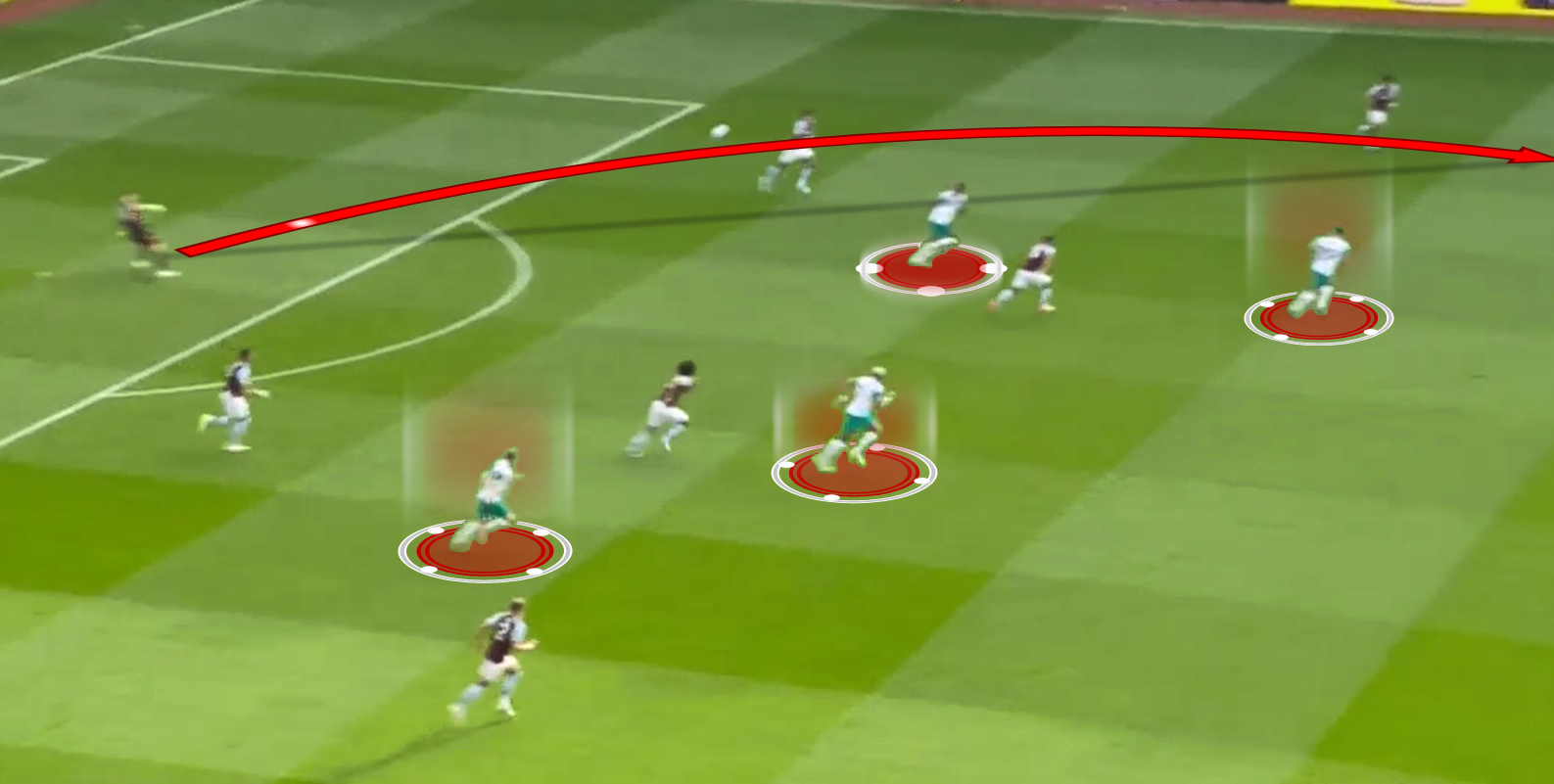
Newcastle traditionally press a little higher than PSG might, often relying on the physicality of their midfielders to get back into shape in transition. Rather than trying to beat the press through short passing, Emi Martinez was often instructed to go long to bypass Newcastle’s midfield.
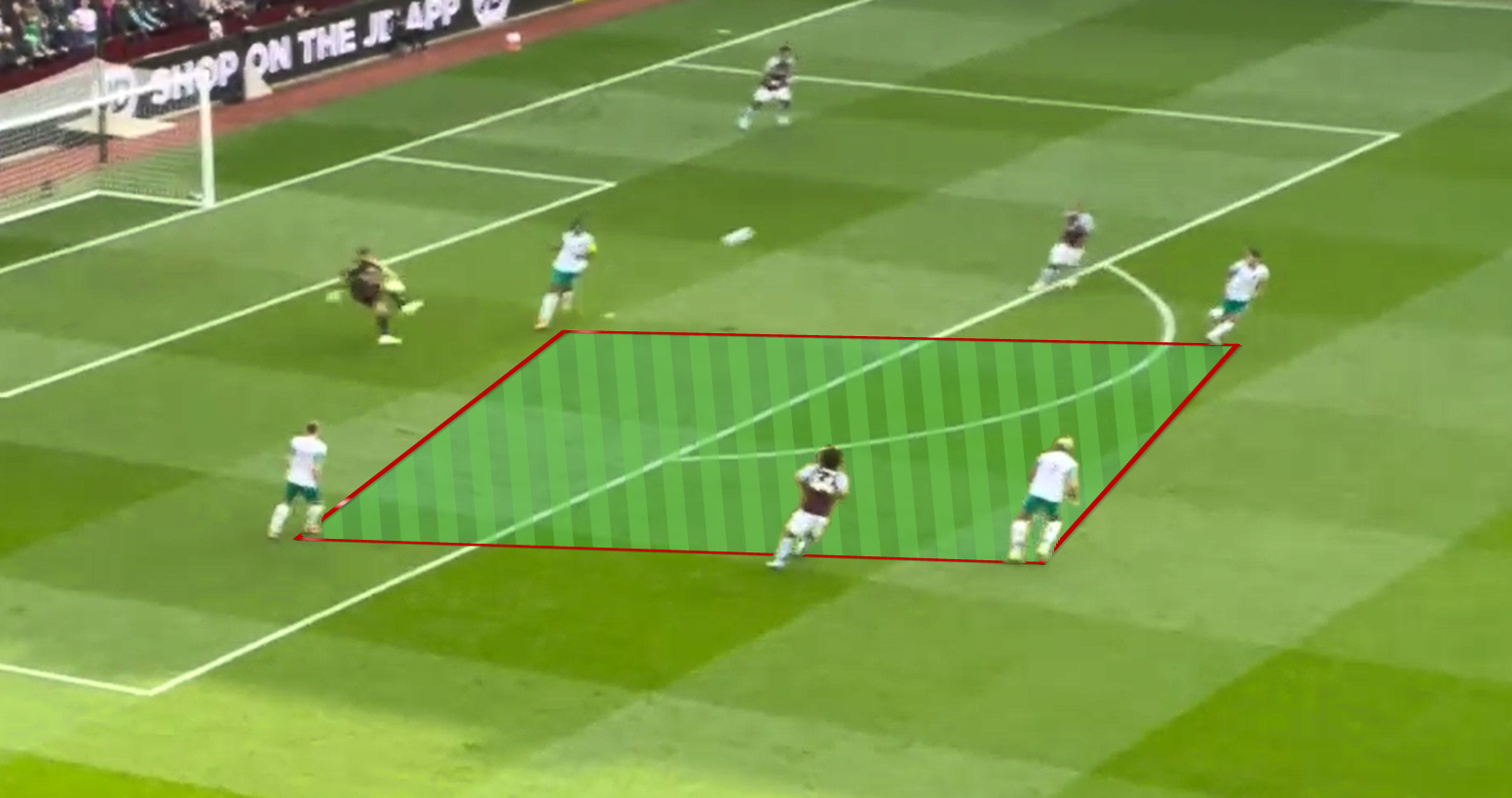
It was a regular occurrence, and with Martinez’s high-level distribution, this allowed Villa to take a chunk of Newcastle’s players out of the game. With Joelinton and Bruno Guimaraes pressing high, this left Villa 2v1 due to their box midfield in the middle of the park.
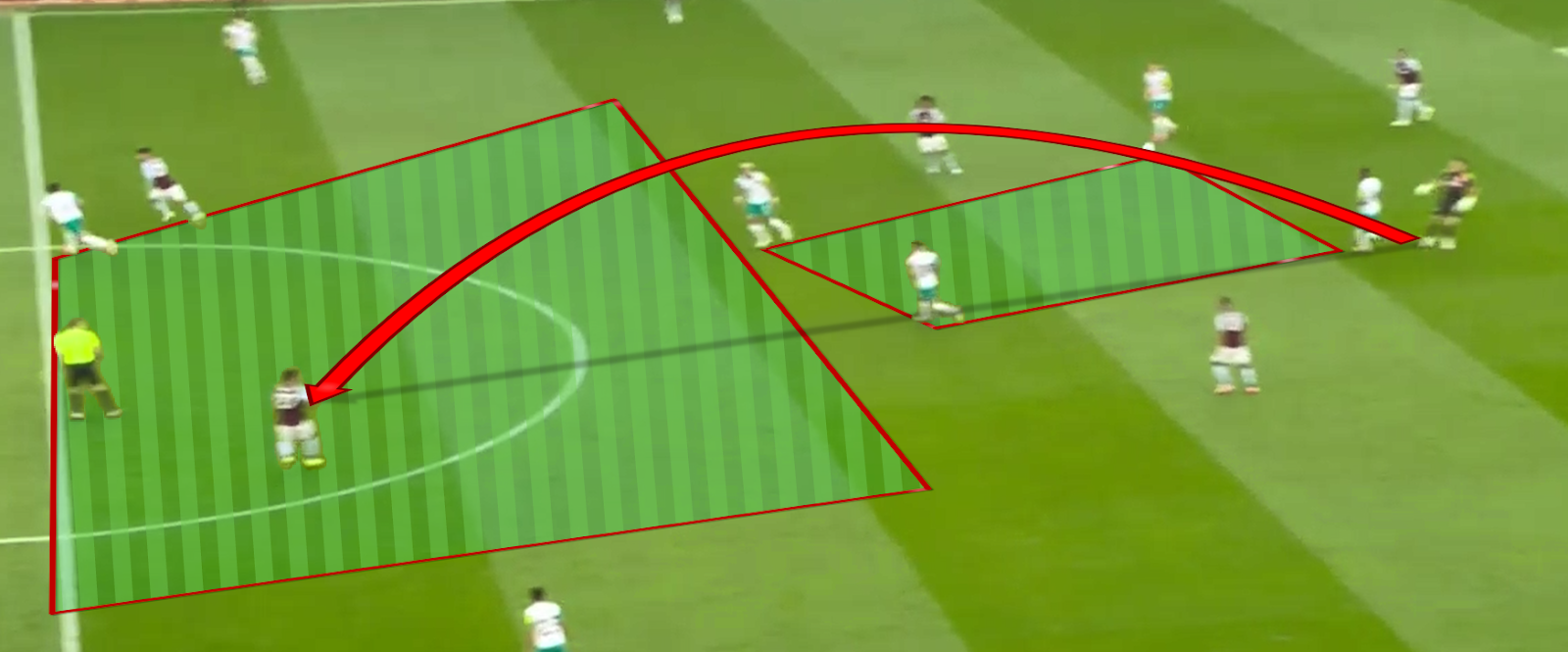
Despite Villa regularly going long, Newcastle continued to push Joelinton and Guimaraes high. This meant the likes of Morgan Rogers, as seen in the image above, could be found in acres of space between the lines.
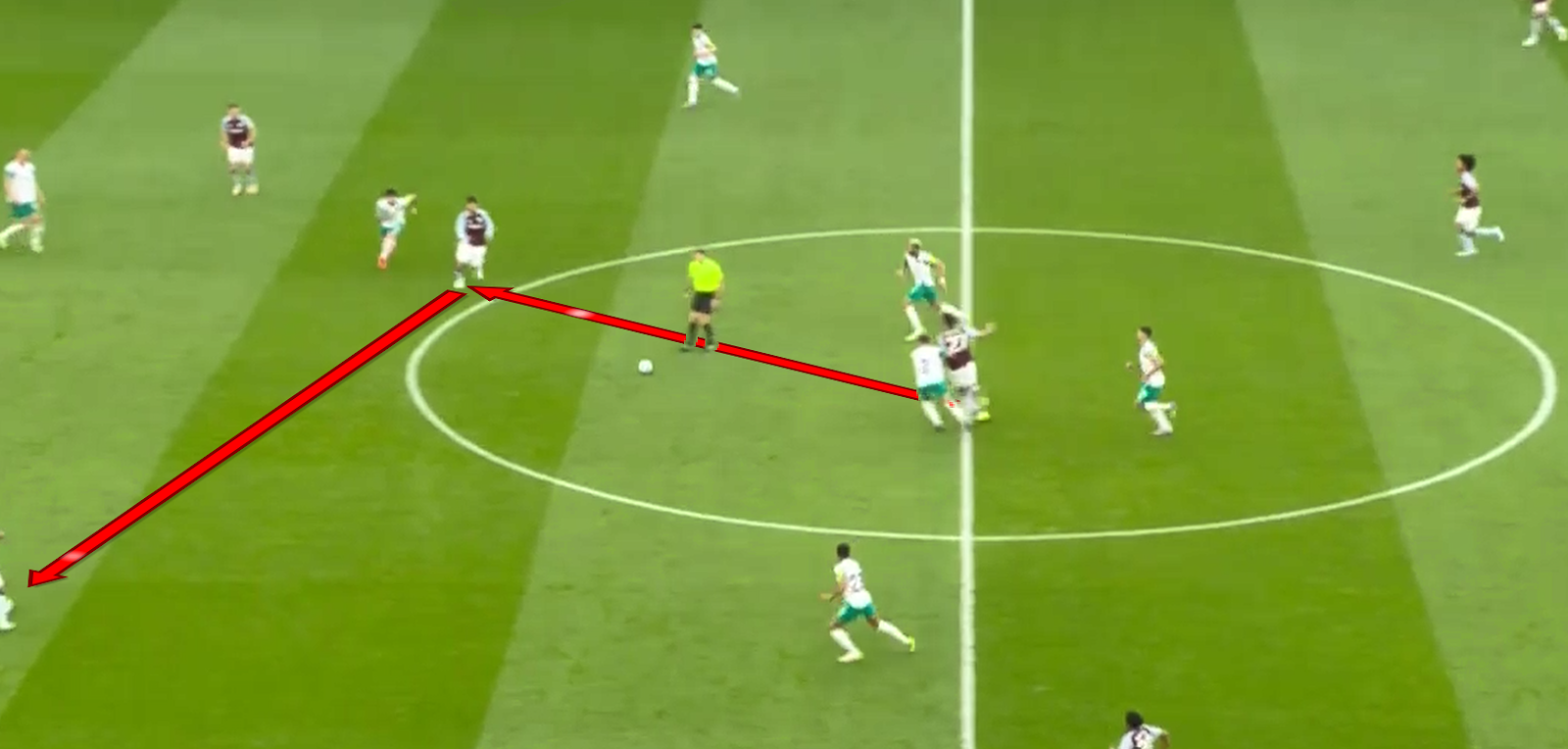
Villa’s quick play in transition led to Rogers finding Marco Asensio before firing a pass out wide to Ollie Watkins, who drifted into a wide position. Moving the ball quickly meant Newcastle’s midfield couldn’t get back into shape, while their defence was also being pulled apart by the movement of McGinn, Watkins, and Asensio.
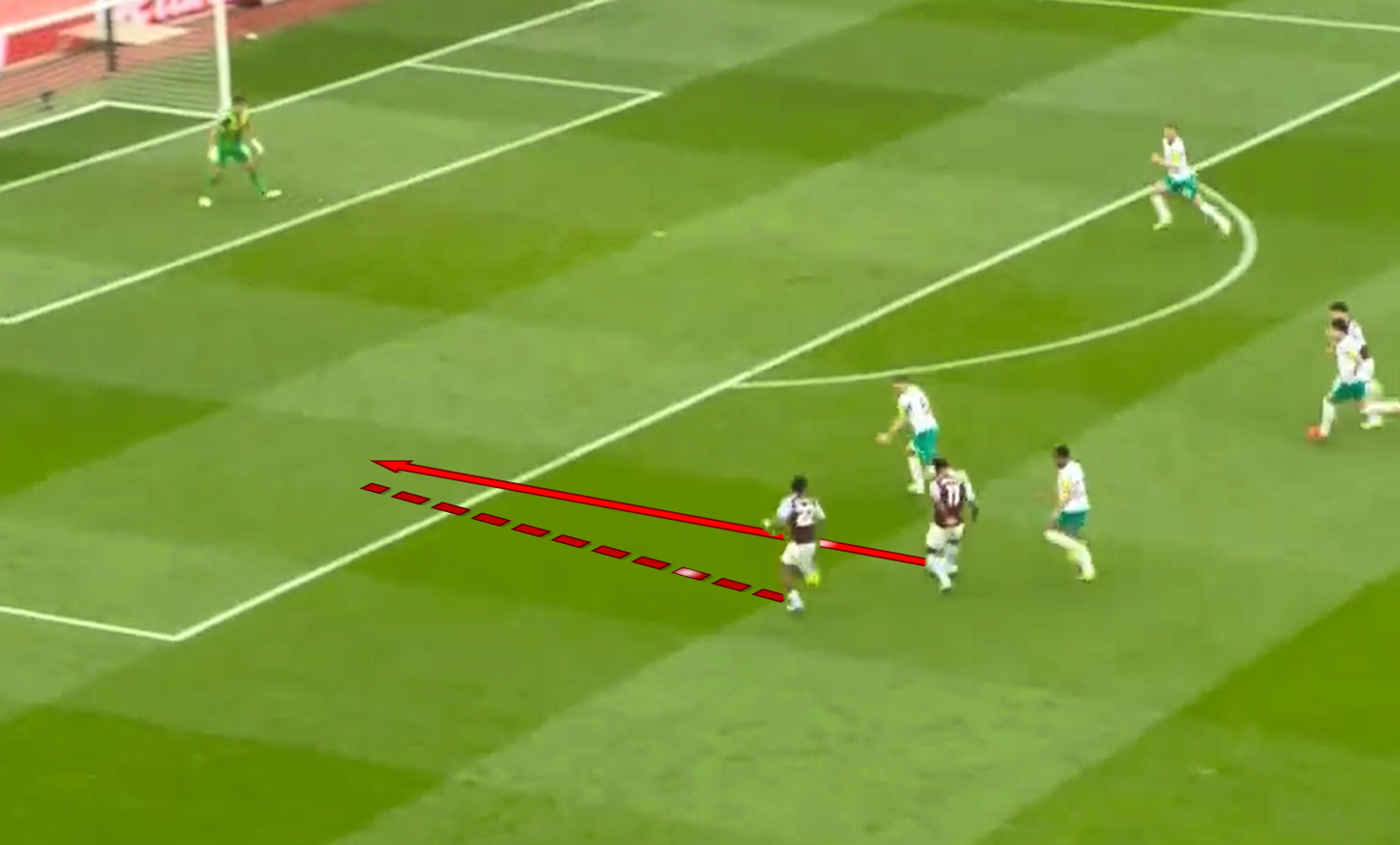
As previously mentioned, Rogers this time was the player to drift inside from the left, vacating space. This is where Villa’s attacking full-backs came into play. When Villa beat Newcastle’s press, Ian Maatsen crept forward before bursting in behind when Watkins received the ball. The Newcastle defenders were occupied by Villa’s attackers, allowing Maatsen to make the overlapping run – he was picked out and dispatched past Nick Pope.
In summary, Villa’s out-of-possession setup undoubtedly had its flaws against PSG, but it was a difficult balance that Emery had to find, with the Premier League side already being two goals down in the tie. Their principles remained the same, which has to be admired, and it did produce some results throughout, despite them being knocked out of the competition.
Against Newcastle, we saw everything come together as it so often has under Emery. Fast-paced football when reaching the final third, varying the build-up to go short and long when necessary, box midfielders to outnumber opposition, high-flying full-backs to create overloads when midfielders tuck centrally.
Most modern football managers get labelled with the same brush (tiki-taka), but the philosophy of Emery is a refreshing one. Not only is it relatively successful, it’s also exciting and entertaining for the neutrals. It’s high-risk, high-reward, but sticking by principles has to be admired.
Written by APFA Member, Tactically Matt
Want to Break Down a Game as Expertly as Matt Does in This Article?
Our online courses offer unmatched guidance across key areas of football analysis, helping you sharpen your skills and earn a certification to advance your development as an analyst.
